
A sprained ankle occurs when the ligaments supporting your ankle joint are stretched or torn, often due to twisting, rolling, or sudden impact. Symptoms typically include pain, swelling, bruising, and difficulty walking. While mild sprains may heal with self-care, more severe injuries may require a medical evaluation, physiotherapy, or supportive devices. Understanding the causes, treatments, and prevention strategies can help ensure a smooth recovery and reduce your risk of future sprains.
A sprained ankle occurs when the ligaments that support your ankle joint are stretched or torn beyond their normal range. This often happens due to a fall, sudden twist, or rolling of your ankle, causing pain, swelling, and difficulty walking. The severity of a sprain can range from mild overstretching to complete ligament tears, which affect your recovery time and treatment options.
The severity of a sprained ankle determines the symptoms, but common signs include:
A sprained ankle happens when the ligaments supporting your joint are stretched or torn due to excessive force. Common causes include:
Ankle sprains are classified into three grades based on the extent of ligament damage:
The ligament is slightly stretched or has a small tear, causing minor swelling and tenderness. Most people can still put weight on their foot.
The ligament is partially torn, leading to noticeable swelling, bruising, and pain. Weight-bearing may be difficult.
The ligament is completely torn, resulting in significant swelling, severe pain, and instability. Walking is often very painful or impossible without support.
Not all ankle sprains require medical care, but certain red flags indicate when to worry about a sprained ankle and that you may need a professional evaluation. These include:
If your ankle feels unstable, keeps giving out, or symptoms worsen, consult a doctor or physiotherapist to rule out fractures or severe ligament damage.
Sprained ankle treatment depends on the severity of the injury. PRICE therapy -protection, rest, ice, compression, and elevation - is often the first step to reduce swelling and pain. Physiotherapy helps restore strength and mobility, while braces, supports, or crutches can aid recovery. In severe cases, surgery may be needed to repair torn ligaments.
For most ankle sprains, it’s best to follow the PRICE method for the first 24 to 48 hours to reduce swelling and support healing:
If pain and swelling are severe, or if walking is difficult, seek medical attention to rule out more serious injuries.
Most sprained ankles can be managed with over-the-counter pain relievers like ibuprofen, naproxen, or acetaminophen, which help reduce pain and inflammation. Topical gels containing ibuprofen can provide localised relief when applied directly to your skin.
If over-the-counter options aren’t effective, a doctor may prescribe stronger pain medications to help manage discomfort. Always follow dosage instructions and consult a healthcare provider if symptoms persist.
Once swelling and pain subside, physiotherapy helps restore your range of motion, strength, flexibility, and stability. A physiotherapist will guide progressive exercises tailored to your recovery needs.
Depending on the severity of your sprain, you may need supportive devices to aid your healing and prevent further injury, including:
While most ankle sprains heal with conservative treatments, surgery may be recommended in rare cases where your injury doesn’t improve or your ankle remains unstable despite physiotherapy and rehabilitation. Surgical options include:
If surgery is required, recovery typically involves immobilisation, physiotherapy, and gradual return to activity. You can learn more about podiatric surgery or explore additional details on ankle disorders and surgery.
Your sprained ankle recovery time depends on the severity of your injury:
Most sprains improve with PRICE therapy, physiotherapy, and the gradual return to activity. Severe cases may need medical intervention for optimal recovery.
You may wonder if you have a sprained or broken ankle. There are several differences when considering a sprained ankle vs broken ankle. An ankle sprain occurs when the ligaments supporting your joint are stretched or torn, while an ankle fracture involves a break in one or more of your ankle bones.
Both sprains and fractures cause pain, swelling, bruising, and tenderness, but the key differences lie in the location and severity of discomfort. Sprain-related pain usually affects the soft tissue around your ankle, and some movement may still be possible, whereas fractures cause pain directly over your bone, often accompanied by visible deformity or numbness.
Healing time also varies, with mild sprains typically recovering in 2 to 4 weeks, while severe sprains may take 6 to 12 weeks. Fractures generally require at least 6 weeks to heal, though recovery may take longer depending on the severity and the need for surgery.
A doctor will assess a sprained ankle through a physical examination, checking for swelling, bruising, tenderness, and range of motion. They may gently move your ankle to determine which ligaments are affected.
If your injury appears severe or if a fracture is suspected, imaging tests such as X-rays, MRIs, or ultrasounds may be used to confirm the diagnosis and rule out broken bones.
Certain factors can increase your likelihood of spraining an ankle:
Ignoring or improperly treating a sprained ankle can lead to long-term issues, including:
Taking proactive steps can help reduce the risk of ankle sprains:
You may be wondering how long does a sprained ankle take to heal – and the answer is that a sprained ankle recovery time depends on its severity. Ankle recovery after a sprain if mild will typically take 2 to 4 weeks, while moderate sprains may heal within 6 to 12 weeks. Severe sprains can require several months of rehabilitation.
No. Walking on a sprained ankle can worsen your injury, especially if it's moderate or severe. Mild sprains may allow limited movement, but it's best to follow PRICE therapy (protection, rest, ice, compression, elevation) and avoid excessive strain. If pain persists or worsens, seek medical attention.
The best way to treat an ankle sprain is to follow PRICE therapy - protection, rest, ice, compression, and elevation - to reduce swelling and support healing. Pain relief medications like ibuprofen can help manage discomfort. Physiotherapy and strengthening exercises aid recovery, while bracing or taping provides additional support. In severe cases, medical intervention may be your required sprained ankle treatment.
You don’t always need to go to A&E for a sprained ankle, but seek medical attention if you have severe pain, significant swelling, or difficulty bearing weight. If your ankle looks deformed or you heard a popping sound at the time of your injury, an X-ray may be needed to rule out a fracture. For mild sprains, PRICE therapy (protection, rest, ice, compression, elevation) can help your recovery at home.
Wondering about when you should worry about a sprained ankle? A serious ankle sprain may involve severe pain, significant swelling, bruising, or difficulty bearing weight. If your ankle feels unstable, numb, or visibly deformed, or if symptoms worsen instead of improving, you should seek medical attention to rule out fractures or severe ligament damage.
Wrapping a sprained ankle overnight can provide support and reduce swelling, but it should be loose enough to avoid restricting your circulation. Some experts recommend removing the wrap after the first 48 hours to allow movement and prevent stiffness. If swelling persists or worsens, consult a healthcare provider.
Avoid walking on it too soon, as this can worsen your injury. Don’t apply heat in the first 48 hours - use ice instead to reduce swelling. Avoid alcohol, which can increase inflammation. Don’t massage the area immediately, as this may aggravate the injury. If symptoms persist or worsen, seek medical attention.
A sprained ankle involves ligament damage, while a strained ankle affects muscles or tendons. Both cause pain, swelling, and bruising, but sprains often lead to joint instability, while strains may cause muscle spasms. If you're unsure, a doctor can assess your injury.
Most mild ankle sprains can heal on their own with PRICE (protection, rest, ice, compression, and elevation). However, moderate to severe sprains may require medical attention or physiotherapy to ensure proper healing and prevent long-term instability. If symptoms persist or worsen, consult a healthcare provider.
The best pain relief for ankle sprains includes ibuprofen or naproxen to reduce inflammation and pain. Paracetamol can also help manage discomfort. Topical gels with ibuprofen provide localised relief. If over-the-counter options aren’t enough, a doctor may prescribe stronger pain medication.


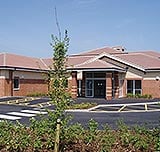
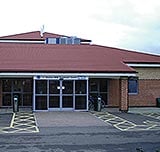


















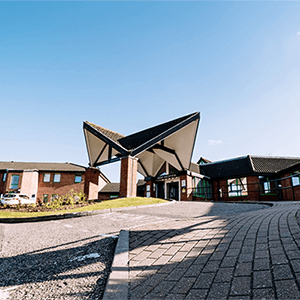


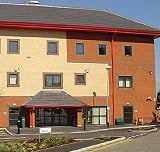


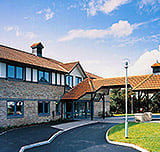



Ramsay Health Care UK are celebrating after being named as a Gold National Joint Registry (NJR) Quality Data Provider for the second year running, after successfully completing a national data quality audit programme for 25 hospitals offering orthopaedic procedures.
Duchy Hospital in Truro, proudly opened its state-of-the-art Imaging and Outpatient Suite representing a major investment in patient care, designed to enhance diagnostic capabilities and improve the overall experience for patients across Cornwall.
There’s cause for celebration at West Midlands Hospital in Halesowen, as the team marks an incredible milestone — 100 successful joint replacement surgeries using the advanced CORI robotic system.
The information, including but not limited to, text, graphics, images and other material, contained on this website is for educational purposes only and not intended to be a substitute for medical advice, diagnosis or treatment. Always seek the advice of your physician or other qualified health care provider with any questions you may have regarding a medical condition or treatment.
No warranty or guarantee is made that the information contained on this website is complete or accurate in every respect. The testimonials, statements, and opinions presented on our website are applicable to the individuals depicted. Results will vary and may not be representative of the experience of others. Prior patient results are only provided as examples of what may be achievable. Individual results will vary and no guarantee is stated or implied by any photo use or any statement on this website.
Ramsay is a trusted provider of plastic or reconstructive surgery treatments as a part of our wrap-around holistic patient care. Our personal, friendly and professional team are here to support you throughout to ensure the best possible care. All procedures we perform are clinically justified.
*Acceptance is subject to status. Terms and conditions apply. Ramsay Health Care UK Operations Limited is authorised and regulated by the Financial Conduct authority under FRN 702886. Ramsay Healthcare UK Operations is acting as a credit broker to Chrysalis Finance Limited.
Ramsay Health Care UK is not currently recruiting for any roles based outside of England. If you are interested in applying for a role with Ramsay Health Care UK, please note that all available positions are advertised exclusively on our official website: https://www.ramsayhealth.co.uk/careers. Be cautious of individuals or organisations that approach you directly for remotely-based roles. Always verify the authenticity of the job offer and be careful with whom you share your personal information. For more information and advice on employment fraud, please visit: https://www.ramsayhealth.co.uk/careers/recruitment-fraud